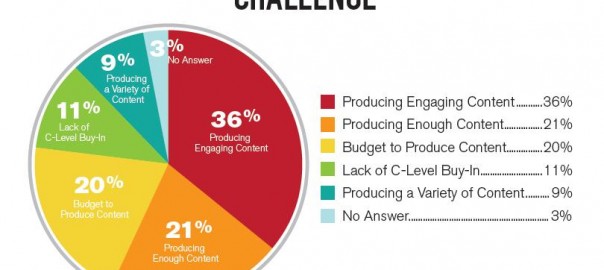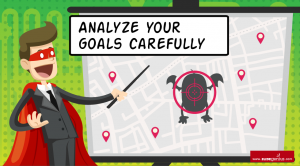You probably understand that in order to have a notable presence on any search engine, you need to ensure that you are perfecting your SEO strategy constantly. One of the best ways to boost your SEO is with quality backlinks on reputable sites. But actually acquiring these types of solid links can be excruciatingly difficult, especially if you are a smaller company or a start-up (and if you’re a start-up, then you need those links more than anyone). You likely reach out to as many influencers as possible who you imagine might be interested in your service or product, but in reality the rejection you face can be quite devastating and discouraging. So how do you provide those influencers with an opportunity they simply cannot reject?
Every marketer has one thing in common- they are looking for content. In fact, according to Neil Patel, the two biggest struggles that marketers have is producing engaging content and producing enough content. That being said, it makes sense that if you provide these influencers with a piece of engaging content that they can use or repurpose, you highly increase your chances of getting a link. Infographics are an excellent example of the kind of content that can be re-posted multiple times.

So what are the steps for ensuring that your infographic not only gets seen by the right people, but also linked to by the right people? Naturally, the first step is understanding who those influencers are that are most integral to promoting the primary subject or topic of your infographic. The second part is to create an infographic that caters to the interests of those influencers. The last step is promoting your infographic, which is a step that is often ignored by a lot of content marketers. This is however one of the most crucial steps to accomplish if you want to make sure that your content is actually being seen, and being seen by the right people.
1) Track down influencers
When you decide to create an infographic, first decide on who you will be outreaching to and let that determine the narrative and style of the infographic you design. What space are you targeting with your infographic? Consider Brian Dean’s example about Perrin Carrell who boosted his SEO and traffic by over 963% by creating infographics for influencers. He chose the perfect topic that fell within the “Dog Blogging” niche, and created one solid infographic on how dogs make humans healthier. One way that might make this easier to comprehend is if you imagine the online marketing space as a city. Every area of a city has specific type of people that live in it. Usually there are the wealthier upperclass areas, or the more artistic and edgy areas, or the busy bustling areas. What kind of stores or restaurants do you think might do better in the wealthier versus the edgy areas? An expensive steakhouse would certainly be better suited for a group of citizens that has a higher income, whereas a dive-bar or underground nightclub would perform better in an area with a younger and more avant-garde crowd.
When pitching the idea of your infographic design, you need to keep this in mind and target the individuals who are more likely to find it useful, not only to themselves but to their readers and followers.
2) Create an Infographic
There are a couple of ways that you can create an infographic. If you have strong design skills, you can use Adobe Photoshop or Illustrator, but if you’re not a designer by nature, it might be better to contract a designer by looking on a freelance site. One solid infographic designed by a professional can cost anywhere between $ 250 to $ 1500, so if that’s outside your range, you can also try out an infographic maker tool. Avoid hiring a designer if you are hoping to bootstrap your SEO efforts. By creating your own infographic using an online software or program, you can ensure that the design fits the exact preferences of the influencers you are sending it too. A lot of these tools are available for free as well or for a very minimal price. Naturally I recommend Venngage, however other services also include Vizualize.me, a tool that generates an infographic resume in minutes, and Visual.ly a service that will make the infographic for you.
3) Promote your infographic
Once you have created your infographic, you can start sending it to your list of influencers. Generally if your infographic represents a subject that strongly impacts their niche, the marketers you reach out to will be very willing to accept your new and “original” content. After a couple of weeks, you can also do a reverse image search on Google to see who might be posting your infographic on their site. If you notice that they haven’t linked back to your original post, you can reach out to those bloggers and request that they add a link back to you. Viral Sweep has a great guide on tackling partner promotions with a list of useful email templates to make your outreach a lot easier.
Even though the majority of marketers understand the benefits of using infographics, the idea of having to create them independently can be very daunting. The question is often whether it is worth the amount of effort to produce an infographic. It is if you design your infographic strategically. Sometimes one can create a piece of content, release it to the wild and then see the shares and links pour in, but the vast majority of the time that doesn’t occur. You need to be ready to push your infographics too if you want to see a boost in SEO.
Digital & Social Articles on Business 2 Community(87)




